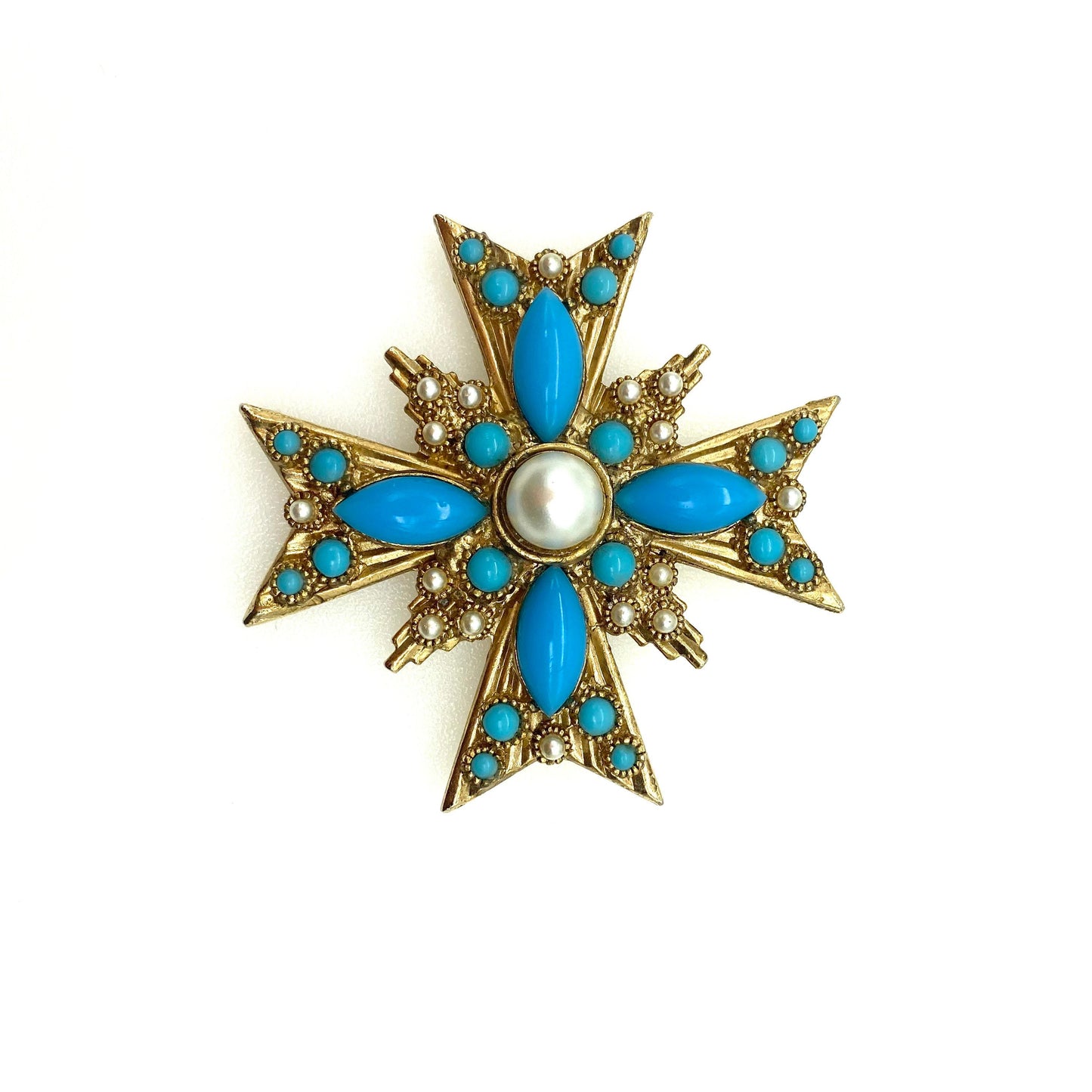Bramble & Lily
Unsigned Sphinx Maltese Cross Brooch/Pendant with Faux Turquoise and Imitation Pearl Signed 9229
Unsigned Sphinx Maltese Cross Brooch/Pendant with Faux Turquoise and Imitation Pearl Signed 9229
Couldn't load pickup availability
Unsigned Sphinx Maltese Cross Brooch/Pendant with Faux Turquoise and Imitation Pearl featuring a gold tone Maltese Cross comprising faux turquoise (in two tones) and imitation pearl embellishments with a larger imitation pearl at the centre. Signed on the reverse '9229' and the bar cartouche is missing 'Sphinx', and is left blank. It has a rollover clasp and it measures 6.3cm high and 6.3cm wide and it weighs 36.1g.
Sphinx jewellery is a vintage British UK jewellery brand, which was started in the late 1940′s by S Root and was based in Chiswick, London. The company produced quality collectable vintage jewellery until the late 90's including statement costume jewellery pieces covering a wide range of styles. Sphinx jewellery can be identified by having the 'Sphinx' stamped in an oval cartouche, which was often accompanied by a design code stamp of a letter and numbers.
Unsigned pieces were either for customers who wanted to sell pieces as their own, because work was produced in a rush to meet demand or because there wasn't space on the design. Pieces may have either numbers only or a letter and numbers. These were design numbers. In addition to their own line, they produced jewellery designs for many creatively talented artists like Kenneth Jay Lane, Butler & Wilson, Joe Mazer (Jomaz), Alfred Philippi, Nina Ricci, Caura, Fried Paris, as well as Saks 5th Avenue, Neiman Marcus, Bloomingdales, Mark & Spencer and other high end department stores in Europe as well as the United States.
The Maltese cross has origins dating back to the Crusades and the Knights Hospitaller. These knights bore the cross, a religious symbol, on their uniforms. During the Crusades, the Knights battled the Saracens, who used fire bombs made from naphtha. Hundreds of Knights were burned alive, and many fellow Knights did their best to save them. Hence, the first “fire fighters.”
Following the Crusades, the Knights made their way to the island of Malta in the 16th century, where the cross remained in use. A sister organisation of the Knights was the Order of St. John’s, a group dedicated to providing care and treating the public. The Maltese cross eventually appeared on the one- and two-euro coins.
Shipping & Taxes:
Free standard shipping worldwide on every order.
USA customers: All import duties and taxes (DDP) are pre-paid and included in the price you see at checkout - no extra fees on arrival.
Europe & rest of the world: Depending on your country, import VAT/customs duties may be due when the parcel arrives. These are the buyer’s responsibility, so please check your local rules before ordering.
Thank you! ♡
Brand: Sphinx
Category: Brooches
Material:
Era:
Colour:
Style: Cross and Whimsical
Features:
Size:
Share










